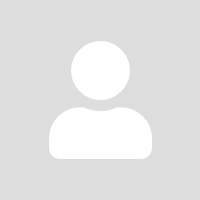Requisite agility and the agile business
"Agile" and agility
There's a lot of talk about the transfer of "Agile" (techniques for managing software development projects) into the rest of business. There is some justification and rationale for this because the basic problem Agile set out to solve – managing complex change in an uncertain environment – is also a problem for businesses. Often, the attempts to transfer are quite superficial, so we get organisations doing a sort of "agile-washing" exercise and rebranding teams as squads, functions as guilds, silos as tribes and workshops as sprints or stand-ups – as if changing the name will change their essential nature.
Although the problem Agile set out to solve is common and some of the principles underlying Agile do transfer to business beyond software projects, just adopting the language or the techniques that work for a team and assuming these can be scaled, doesn't usually work when applied at the level of the organisation. Agility is not the same as having a team using Agile techniques or even having lots of Agile teams.
Requisite agility is about changing the business fast enough to continue to survive and thrive in a turbulent business environment. Sometimes those changes are just fluctuations in demand for what you're already doing. Sometimes the business environment changes so much that you have to change the nature and direction of the business to stay relevant. Sometimes you want to change in order to proactively change the environment – creating a new market or a new area of business. So how much agility any organisation needs – how much agility is Requisite depends on their situation.
There isn't one single situation where agility is needed – other than the existential one of 'survive & thrive' – and there isn't one single approach that will deliver it.
So what does Requisite Agility in a business look like?
How agile you need to be as a business depends on how volatile your environment is – and from sector to sector, business environments vary dramatically in how much they change and how fast. So the first characteristic of an agile business is its ability to know how much and how fast its environment is changing, because that tells you how agile you need to be. If you're going for the high jump it helps to know how high the bar is.
If you have an idea of how much the world around you is changing, you need to be able to make sense of that – what does it mean for you? Does it represent an opportunity or a threat? Do you need a tactical response or a major strategic shift? Are you reacting to what others are doing or shaping the playing field so others have to react? So agile businesses keep their models of themselves, their world and what shifts might mean, up to date so that when they spot something changing they don't continually have to waste time trying to figure out what it might mean for them.
These first two capabilities – first sensing the scale and rate of environmental change and then making sense of it – are cheap to do if they are done on an ongoing basis, and then it's easy to keep up to date. They're hard to do if you wait until you're in the midst of a crisis. One of the big issues with agility is how much the business needs to change how fast and early warning – recognising the need for change – is effectively a way to give yourself more time. In the high jump analogy, it gives you a longer run up. This is important because sensing and sense making are cheap and easy whereas organisational change is relatively expensive and hard, and the faster it has to be done, the more painful it is.
So armed with a sense of how fast your world is changing and what that might mean for you, the next capability the agile business needs is decision making. Obviously if your sensing and sense making are good, then it's much easier to take decisions well. Slightly less obviously, it's also quicker. Scenario and contingency planning – "if X happens we'll do Y" - allow you to take almost instantaneous decisions and can shorten decision making time from months or years to days or hours. For situations you haven't foreseen, the Agile Business knows how to take the decisions it needs – who takes which decisions with what information and what the decision process should be.
Ultimately of course Requisite Agility depends on the business being able to change – to shift resources and attention away from some things and onto others. Depending on the scale of change in the environment, that might mean more flexibility in operational delivery, but it could mean shifting resources to create a whole new area of business. There are two main aspects to this, one is the ability to free up resources to do something different and the other is the autonomy the business allows itself about how different it can be. When the environment demands lots of operational change, generally devolving autonomy helps. When a change in strategic direction is called for, then the trade-offs between centralised direction and team autonomy is more nuanced.
Requisite Agility isn't a vague or utopian concept – it's precise enough that we can measure it. In all those areas: the rate of change of the business environment, the ability to scan that environment and then make sense of it, the ability to decide what to do and then change the business to suit, in all those areas organisations differ massively. The speed of decision making in similar situations can vary from years to hours. Even within the same organisation, the agility of business units can differ by orders of magnitude. What is needed in terms of the level of agility and in terms of what's needed to improve that varies considerably and is specific to each business – there is no "one size fits all recipe". In this, businesses genuinely are different. The good news is that agility can be improved, sometimes it's relatively easy, sometimes it's more difficult – depending on which aspect most needs strengthening, but even for the hardest areas, we've helped businesses increase their agility by a factor of 30. And that can make the difference between thriving and failing to survive.
Related Posts
Comments
By accepting you will be accessing a service provided by a third-party external to https://www.requisiteagility.org/




